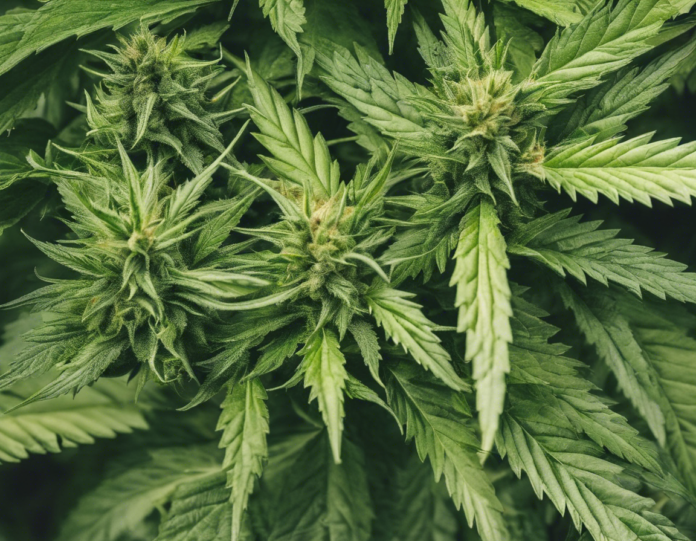Marijuana, cannabis, pot, weed, ganja – these are all terms used to refer to the same substance that has sparked debates and discussions for decades. Ganja, in particular, has a rich history and cultural significance in many parts of the world, but it also carries a stigma in others. In this comprehensive guide, we will delve deep into the world of ganja, exploring its origins, uses, effects, legal status, and more.
Origins and Cultural Significance of Ganja
Ganja, or marijuana, has been used by civilizations for thousands of years. Its origins can be traced back to Central Asia and the Indian subcontinent, where it was cultivated for its medicinal, spiritual, and recreational properties. In ancient India, ganja was considered sacred and was used in religious ceremonies and rituals. It was believed to bring users closer to the divine and enhance meditation and introspection.
Over time, ganja spread to various parts of the world, including the Middle East, Africa, the Caribbean, and the Americas. In many cultures, it was used for its medicinal properties to treat a variety of ailments, including pain, inflammation, and anxiety. Ganja also became popular for its psychoactive effects, which can induce feelings of relaxation, euphoria, and heightened sensory perception.
Understanding the Components of Ganja
Ganja contains over 100 different compounds known as cannabinoids, the most well-known of which are tetrahydrocannabinol (THC) and cannabidiol (CBD). THC is responsible for the psychoactive effects of ganja, while CBD is non-psychoactive and is believed to have various therapeutic properties. The ratio of THC to CBD can vary greatly among different strains of ganja, leading to a wide range of effects on the user.
In addition to cannabinoids, ganja also contains terpenes, which are aromatic compounds that give the plant its distinctive smell and flavor. Terpenes not only contribute to the overall experience of using ganja but may also have therapeutic benefits of their own. Some common terpenes found in ganja include myrcene, limonene, and pinene, each with its own unique effects.
Medicinal Uses of Ganja
Ganja has long been used for its medicinal properties, and modern research has only begun to uncover its full potential. One of the most well-known medicinal uses of ganja is its pain-relieving properties. THC, CBD, and other cannabinoids have been shown to reduce pain perception and inflammation, making ganja a popular choice for chronic pain conditions such as arthritis and migraines.
Ganja is also commonly used to alleviate anxiety and depression. While high doses of THC can sometimes exacerbate anxiety, low to moderate doses and strains high in CBD have been shown to have anxiolytic effects and may help improve mood and reduce stress. Additionally, ganja may be beneficial for individuals with insomnia, nausea, and muscle spasms, among other conditions.
Recreational Use and Effects of Ganja
Beyond its medicinal uses, ganja is also widely used for recreational purposes due to its psychoactive effects. When consumed, ganja can produce a sense of euphoria, relaxation, and heightened sensory perception. Users may experience changes in perception of time, increased appetite (commonly referred to as “the munchies”), and feelings of creativity and introspection.
However, it’s important to note that ganja affects individuals differently, and factors such as dosage, method of consumption, and personal tolerance can all influence the overall experience. Some users may find ganja to be enjoyable and relaxing, while others may experience negative side effects such as anxiety, paranoia, or impaired coordination.
Legal Status of Ganja
The legal status of ganja varies greatly from country to country and even within different regions of the same country. In some places, ganja is fully legalized for both medicinal and recreational use, while in others, it remains strictly prohibited. In many countries, ganja laws are in a state of flux, with ongoing debates and changes in legislation.
In regions where ganja is legal, it is typically regulated to ensure quality control and consumer safety. This includes restrictions on advertising, age limits for purchase, and testing for contaminants such as pesticides and heavy metals. Legalization has also led to the emergence of a new industry, with businesses selling ganja products ranging from dried flower and edibles to concentrates and topicals.
Common Methods of Consuming Ganja
There are several ways to consume ganja, each with its own advantages and effects. Some of the most common methods include:
-
Smoking: Smoking ganja is one of the most traditional and popular methods of consumption. It involves inhaling the smoke produced by burning dried ganja flower. Smoking provides near-instant effects and allows users to control their dosage more easily.
-
Vaporizing: Vaporizing ganja involves heating the flower or concentrate to a temperature that releases cannabinoids and terpenes without combusting the plant material. This method is often preferred for its cleaner taste and reduced risk of harmful byproducts compared to smoking.
-
Edibles: Edibles are ganja-infused food and beverage products that are consumed orally. They take longer to take effect compared to smoking or vaporizing but can produce more intense and longer-lasting effects. Common edibles include gummies, chocolates, and infused beverages.
-
Topicals: Ganja-infused topicals such as lotions, balms, and creams are applied directly to the skin and are absorbed transdermally. They are commonly used for localized pain relief, inflammation, and skin conditions without producing psychoactive effects.
-
Tinctures: Ganja tinctures are liquid extracts made by soaking ganja flower or concentrate in alcohol or oil. Tinctures are typically taken sublingually (under the tongue) for fast absorption and precise dosing.
Each method of consumption has its own onset time, duration of effects, and bioavailability, allowing users to choose the option that best suits their preferences and needs.
Frequently Asked Questions (FAQs)
1. Is ganja the same as marijuana or cannabis?
- Yes, ganja is a term used to refer to marijuana or cannabis in various cultures. They all describe the same plant and its derivatives.
2. Can ganja be addictive?
- While ganja is not physically addictive like substances such as alcohol or opioids, some individuals may develop a psychological dependence on it.
3. Can ganja be used as a substitute for prescription medications?
- Ganja should not be used as a substitute for prescribed medications without consulting a healthcare professional. It may interact with certain medications and conditions.
4. Are there different strains of ganja, and do they have different effects?
- Yes, there are numerous ganja strains, each with its own unique cannabinoid and terpene profile that can produce varying effects on the user.
5. Can ganja help with PTSD and other mental health conditions?
- Some research suggests that ganja may have potential therapeutic benefits for PTSD and other mental health conditions, but more studies are needed to fully understand its effects.
6. What is the difference between hemp and ganja?
- Hemp and ganja are both varieties of the Cannabis sativa plant, but they differ in their cannabinoid content. Hemp contains high levels of CBD and trace amounts of THC, while ganja has higher THC levels.
7. Are there potential side effects of consuming ganja?
- Common side effects of ganja consumption include dry mouth, red eyes, increased heart rate, and impaired coordination. Higher doses may lead to anxiety, paranoia, and short-term memory loss.
8. Can ganja interact with other medications?
- Yes, ganja may interact with certain medications, particularly those that are metabolized by the liver. It’s important to consult a healthcare provider before using ganja alongside other medications.
9. How long do the effects of ganja last?
- The duration of ganja effects can vary depending on factors such as dosage, method of consumption, and individual tolerance. Typically, effects can be felt for 2-6 hours.
10. Is it safe to drive or operate machinery after consuming ganja?
- It is not safe to drive or operate machinery under the influence of ganja, as it can impair coordination, reaction time, and decision-making abilities. It is important to wait until the effects have worn off before engaging in such activities.
In conclusion, ganja is a complex plant with a long history of medicinal, spiritual, and recreational use. As attitudes and regulations surrounding ganja continue to evolve, it is essential for users to educate themselves on its effects, risks, and legal status. Whether used for pain relief, relaxation, creativity, or spiritual exploration, ganja remains a fascinating and enigmatic plant that continues to intrigue and divide societies around the world.





